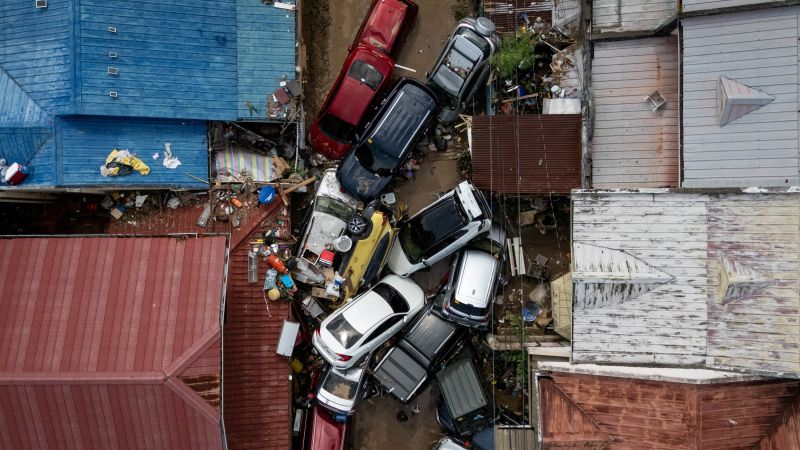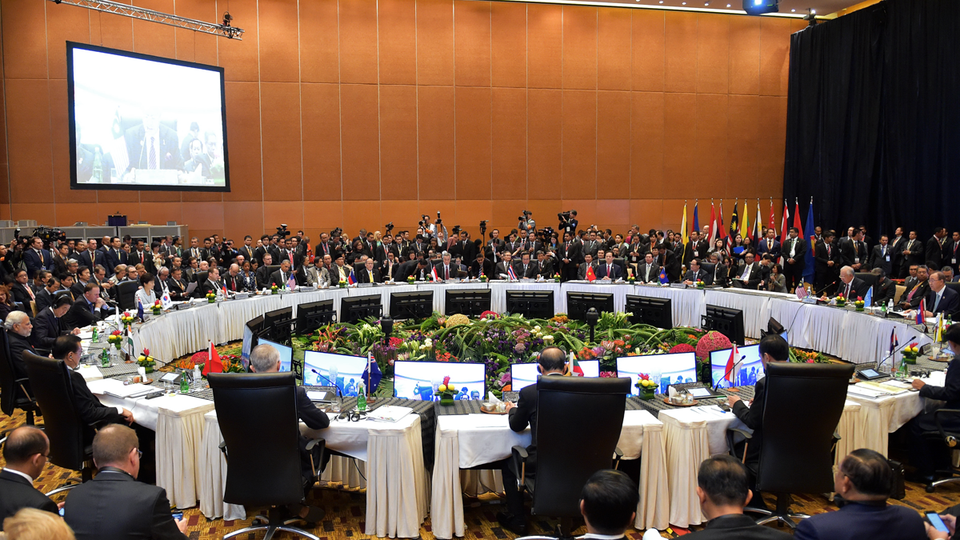Typhoon Kalmaegi has wreaked havoc in the central Philippines, claiming at least 114 lives and displacing tens of thousands as it moves toward Vietnam. The storm, which has been classified as the deadliest typhoon of the year in the Philippines, has left entire neighborhoods in ruin, particularly in the popular tourist region of Cebu. Residents are now faced with the daunting task of salvaging belongings from their devastated homes while floodwaters recede, revealing widespread destruction.
As Kalmaegi advances over the South China Sea, it has intensified, reaching the equivalent of a Category 4 hurricane. Forecasts indicate that it will make landfall in central Vietnam on the night of November 2, 2023. This area is still recovering from severe flooding and landslides triggered by weeks of relentless rainfall and previous storms. In addition, another storm, named Fung-Wong, is expected to gain strength and may threaten the northern Philippines with further flooding and damage over the weekend.
Destruction in Cebu
The devastation caused by Typhoon Kalmaegi has taken many residents and local officials by surprise. Drone footage reveals catastrophic flooding that transformed streets into rivers, submerging homes and overturning vehicles. In Talisay City, communities along the Mananga River have been buried under mud and debris, while Cebu City has witnessed cars piled on top of each other in flooded streets. Rescue workers have been navigating waist-deep water to assist residents trapped in their homes.
Mely Saberon, a 52-year-old resident from Talisay, shared her experience, stating, “We don’t have any home anymore. We weren’t able to salvage anything from our house.” Another survivor in Cebu City, Marlon Enriquez, remarked that the floodwaters “quickly rushed in,” leaving little time to gather possessions. The typhoon struck just over a month after a powerful magnitude 6.9 earthquake hit Cebu, which had already resulted in 74 fatalities and widespread displacement.
In response to the disaster, Philippine President Ferdinand Marcos Jr. declared a state of national calamity and committed to ongoing relief and recovery efforts.
Factors Behind the Destruction
The Philippines has long been accustomed to typhoons, with Kalmaegi being the 20th named storm to hit the country this year. Although it was not the strongest storm of the season, its slow movement and heavy rainfall led to severe flooding in densely populated areas. Local officials indicated that many fatalities resulted from drowning as rivers overflowed and flash floods surged through communities.
In nearby Leyte and northern Mindanao, rainfall reached between 150 and 250 mm (6 to 10 inches) in just 24 hours, surpassing the typical monthly rainfall for November. The rugged terrain of Cebu compounded the problem, directing rainwater toward communities that lacked adequate drainage systems. “Wind speed is often what the public focuses on, but water is almost always the #1 killer,” stated Taylor Ward, a meteorologist for CNN.
The impact of Kalmaegi was exacerbated by clogged waterways in an already flood-prone region. Bernardo Rafaelito Alejandro IV, deputy administrator for the Philippines Office of Civil Defense, emphasized the need to improve early warning systems and infrastructure. “We need to rethink how we build our megacities and improve on our resiliency,” he articulated, highlighting that the Philippines is one of Asia’s most flood-prone nations.
This year has also seen the country embroiled in a significant corruption scandal concerning flood control projects, which has led to widespread protests. Allegations of kickbacks involving legislators and construction firms have surfaced, raising concerns about the allocation of funds intended for flood prevention.
As Typhoon Kalmaegi progresses toward Vietnam, preparations are underway for the anticipated impact. With winds now reaching 215 kph (130 mph), Vietnam is bracing for damaging winds, heavy rains, and potential storm surges in central provinces, including Đà Nẵng, Quang Ngai, and Dak Lak. It is estimated that around 350,000 people in Gia Lai province may need to evacuate.
The region has not yet recovered from recent devastating floods which already claimed at least 13 lives and inundated over 116,000 homes and 5,000 hectares of crops. Historical sites, such as the UNESCO World Heritage-listed town of Hoi An, have also been affected, with residents describing the flooding as the worst they have ever seen.
The climate crisis is contributing to the increasing severity of storms in the region. Global ocean temperatures have reached record highs, providing the necessary energy for storms to strengthen. This trend is expected to continue, affecting rainfall patterns and intensifying weather events in the future.







